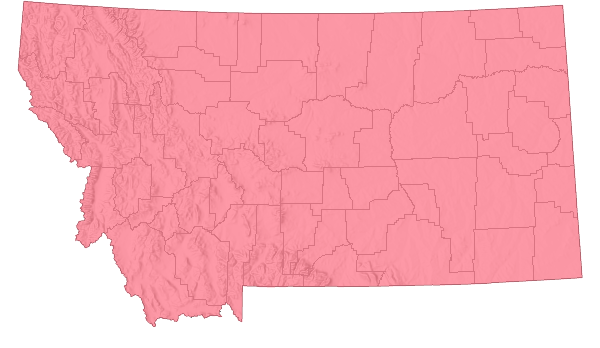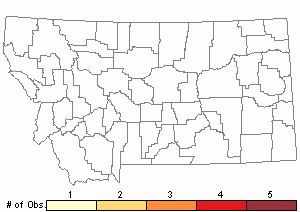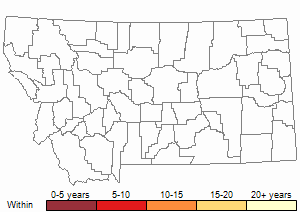View in other NatureServe Network Field Guides
NatureServe
Montana
Utah
Wyoming
Idaho
Wisconsin
British Columbia
South Carolina
Yukon
California
New York
Plague bacterium - Yersinia pestis
General Description
Yersinia pestis is a Gram-negative rod-shaped bacterium that is the cause of the infectious disease known as plague.
Species Range
Montana Range
Range Descriptions

 Non-native
Non-native
Range Comments
The bacterium Yersinia pestis is believed to have originated in central Asia (Achtman et al. 2004 In Biggins 2010), but is now present world-wide. The bacterium is a fairly recent introduced species to North America. The first cases of plague in the United States were in coastal area including Los Angeles, San Fransisco, and Seattle. Plague was not reported in the United States until the late 1890's and early 1900's (Link 1955). It is believed that Yersinia pestis eventually reached and spread throughout the native rodent population. It reached it's current distribution by 1950. In North America, plague is found from the west coast to the Great Plains and from southwestern Canada to Mexico (CDC 2009).
Observations in Montana Natural Heritage Program Database
Number of Observations: 35
(Click on the following maps and charts to see full sized version)
Map Help and Descriptions
Relative Density

Recency


 (Observations spanning multiple months or years are excluded from time charts)
(Observations spanning multiple months or years are excluded from time charts)
Stewardship Responsibility
Threats or Limiting Factors
Even though the common reservoir host for the plague bacterium is usually rodents, it is the infector (fleas) that actually transmits it between hosts. Plague can be transmitted to humans via contact with or biting of infected fleas, as well as contact with infected mammals. No confirmed case of human-to-human plague has been documented in the United States since 1925.
Over 200 mammalian species have been documented contracting plague, including the Montana Species of Concern Black-tailed Prairie Dog, White-tailed Prairie Dog and Black-footed Ferret (PHAC 2001).
References
- Additional ReferencesLegend:
 View Online Publication
View Online Publication
Do you know of a citation we're missing? Holmes, Brian. 2003. Ecology and Persistence of Sylvatic Plague in Phillips County, Montana. MS Thesis. University of Montana, Missoula, MT.
Holmes, Brian. 2003. Ecology and Persistence of Sylvatic Plague in Phillips County, Montana. MS Thesis. University of Montana, Missoula, MT.
- Web Search Engines for Articles on "Plague bacterium"





